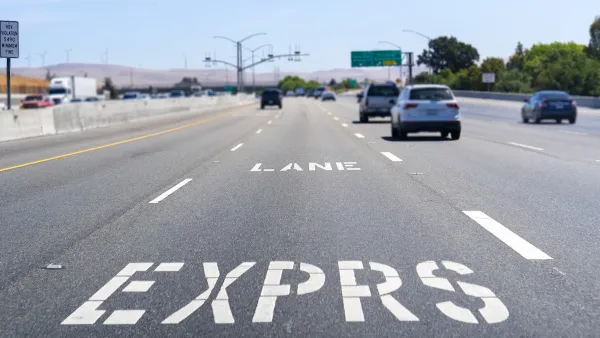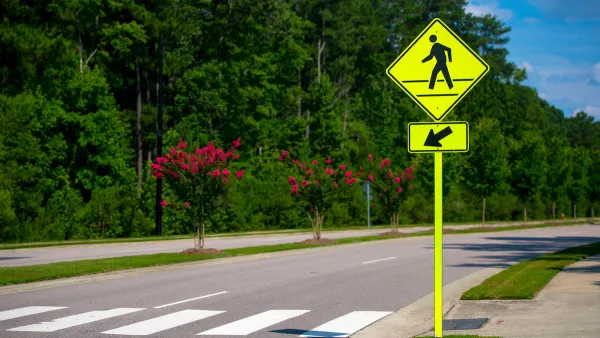As the holiday travel season begins, Becky Krystal reminisces on rest stops encountered along family road trips and observes that "stops are evolving from small, flypaper-plastered restrooms into airy, high-tech travel plazas and welcome centers."
On Interstate 25 south of Cheyenne, Wyoming, a $16 million welcome center consists of exhibits representing the state including a re-creation of a dinosaur dig site and a replica of Butch Cassidy's jail cell. "The Wyoming welcome center and other 21st century highway rest stops have come a long way since their rustic predecessors," writes Krystal. The first facility apparently came to existence in the late 1920s when an engineer built picnic tables to give families a safe place to stop and rest, and the picnic areas evolved into the roadside parks of the 1940's and '50s to the utilitarian structures of the 1960's and '70s. Many of those structures are now worn down, and public-private partnerships are working on rebuilding them. For example, the 48-year-old Maryland House and the nearby 36-year-old Chesapeake House in Maryland will be torn down and reopened with gas stations and food vendors.
"The right to offer such commercial outlets is the exception rather than the rule," says Krystal. From the early years of the interstate system, the Federal Highway Administration enforced a commercial ban "to prevent monopolies for services and to ensure that travelers didn't feel pressured to buy things." However, rest stops that don't offer commercial services have pursued other options like enhanced vending machines and information kiosks in Virginia, farmers markets on the Pennsylvania Turnpike, themed centers in Texas and Missouri, and free WiFi in Maryland, Iowa and North Dakota. Many of these new facilities are also eco-friendly with LEED-certification and a geothermal pump system in Virginia; solar panels in California, Wyoming, and Oregon; wind turbines in Missouri; and green roofs at rest stops throughout the country.
"The new generation of features and amenities can sound too good to be true, given the economic difficulties many states have encountered over the past few years," admits Krystal. States have reduced service at or even shut down rest areas in the past few years, but "rest areas aren't on the verge of extinction - yet, anyway." Rest areas are "now an established part of American travel," said Joanna Dowling, a historian who created www.restareahistory.org, and "a very valuable commodity," said Lon Anderson, the managing director of public and government relations for AAA Mid-Atlantic who helped organize opposition to the closings.
FULL STORY: It’s not your father’s rest stop

Analysis: Cybertruck Fatality Rate Far Exceeds That of Ford Pinto
The Tesla Cybertruck was recalled seven times last year.

National Parks Layoffs Will Cause Communities to Lose Billions
Thousands of essential park workers were laid off this week, just before the busy spring break season.

Retro-silient?: America’s First “Eco-burb,” The Woodlands Turns 50
A master-planned community north of Houston offers lessons on green infrastructure and resilient design, but falls short of its founder’s lofty affordability and walkability goals.

Test News Post 1
This is a summary

Analysis: Cybertruck Fatality Rate Far Exceeds That of Ford Pinto
The Tesla Cybertruck was recalled seven times last year.

Test News Headline 46
Test for the image on the front page.
Urban Design for Planners 1: Software Tools
This six-course series explores essential urban design concepts using open source software and equips planners with the tools they need to participate fully in the urban design process.
Planning for Universal Design
Learn the tools for implementing Universal Design in planning regulations.
EMC Planning Group, Inc.
Planetizen
Planetizen
Mpact (formerly Rail~Volution)
Great Falls Development Authority, Inc.
HUDs Office of Policy Development and Research
NYU Wagner Graduate School of Public Service




























